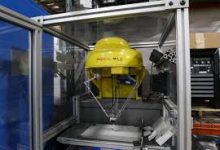
Introduction:
Sensory perception is the foundation of human experience, shaping how we interact with the world around us and interpret our surroundings. For individuals with sensory impairments or limitations, such as vision or hearing loss, these experiences may be altered or diminished, posing unique challenges to their daily lives. However, with advancements in technology, particularly in the realm of assistive devices and hybrid robotics, there is new hope for enhancing sensory perception and enabling individuals to overcome these barriers. In this extensive exploration, we delve into the transformative role of technology in enhancing sensory perception, examining its applications, benefits, and future prospects in expanding human experience and promoting inclusion.
Vision Augmentation:
Visual impairment affects millions of people worldwide, impacting their ability to perceive and navigate their surroundings. Assistive technologies and hybrid robotics offer innovative solutions to enhance vision and improve the quality of life for individuals with visual impairments. For example, wearable devices equipped with cameras and image processing algorithms can provide real-time object recognition, text-to-speech conversion, and navigation assistance, enabling users to identify objects, read text, and navigate indoor and outdoor environments with greater ease and independence. Additionally, biohybrid vision systems inspired by the principles of biological vision can mimic the functionality of the human eye, providing users with enhanced visual acuity, depth perception, and color vision, further enhancing their sensory experience.
Vision Augmentation: Transforming Sight Through Innovative Technologies
Vision is a cornerstone of human experience, allowing us to perceive and interact with the world around us. However, for individuals with visual impairments or limitations, everyday tasks can pose significant challenges. In recent years, advances in technology, particularly in the realm of vision augmentation, have provided new hope for enhancing sight and improving the quality of life for individuals with diverse visual needs. In this comprehensive exploration, we delve into the transformative role of vision augmentation technologies, examining their applications, benefits, and future prospects in expanding human vision and promoting inclusivity.
Understanding Vision Augmentation:
Vision augmentation refers to the use of technology to enhance or restore visual function for individuals with visual impairments or limitations. This can include a wide range of devices and systems, from wearable gadgets to implantable devices, designed to improve visual acuity, enhance contrast sensitivity, and provide assistance with tasks such as reading, navigation, and object recognition. By leveraging advanced sensors, processing algorithms, and display technologies, vision augmentation technologies aim to provide users with greater independence, mobility, and access to information in their daily lives.
Assistive Devices for Low Vision:
For individuals with low vision, assistive devices such as magnifiers, electronic readers, and screen readers offer valuable tools for enhancing visual function and facilitating daily activities. These devices leverage magnification, contrast enhancement, and text-to-speech conversion to make printed materials, digital content, and environmental information more accessible to users with impaired vision. For example, electronic magnifiers equipped with high-definition cameras and adjustable zoom levels can help individuals with low vision read books, newspapers, and menus with greater ease and comfort, while screen readers can convert text on computer screens or mobile devices into speech or braille, enabling users to access digital content independently.
Wearable Vision Augmentation Systems:
Wearable vision augmentation systems, such as smart glasses and augmented reality (AR) headsets, offer advanced solutions for enhancing vision and providing real-time assistance to individuals with visual impairments. These devices incorporate cameras, sensors, and display technologies to capture visual information from the environment, process it in real-time, and present it to the user in a format that is accessible and easy to interpret. For example, smart glasses equipped with computer vision algorithms can identify objects, people, and text in the user’s surroundings and provide audio or visual cues to assist with navigation, object recognition, and social interaction.
Retinal Prostheses and Implantable Devices:
For individuals with severe visual impairments or blindness, retinal prostheses and implantable devices offer innovative solutions for restoring visual function and improving quality of life. These devices bypass damaged or non-functional parts of the retina and directly stimulate the remaining healthy cells or the visual cortex, providing users with artificial vision. While still in the early stages of development, retinal prostheses show promise for enabling individuals with retinal degenerative diseases such as retinitis pigmentosa or macular degeneration to perceive light, motion, and simple shapes, enhancing their ability to navigate and interact with their environment.
Future Directions and Opportunities:
As technology continues to advance, there are exciting opportunities for further innovation and development in the field of vision augmentation. Emerging technologies such as optogenetics, gene therapy, and neural interfaces offer new possibilities for restoring vision at the cellular or genetic level, addressing the root causes of visual impairments and providing long-lasting solutions for individuals with degenerative eye conditions. Additionally, advancements in artificial intelligence, machine learning, and computer vision hold promise for improving the performance and usability of vision augmentation devices, enabling more seamless integration into users’ daily lives and enhancing their overall quality of life.
In conclusion,
Vision augmentation technologies offer transformative solutions for enhancing sight and improving the quality of life for individuals with visual impairments or limitations. By leveraging advanced sensors, processing algorithms, and display technologies, these devices provide users with greater independence, mobility, and access to information, empowering them to navigate the world with confidence and dignity. As researchers and engineers continue to push the boundaries of what is possible, there are exciting opportunities for further innovation and development in vision augmentation, shaping a more accessible, inclusive, and equitable future for all.
Auditory Augmentation:
Hearing loss is another common sensory impairment that affects millions of people worldwide, limiting their ability to communicate, interact, and engage with others. Assistive technologies and hybrid robotics offer innovative solutions to enhance auditory perception and improve communication for individuals with hearing impairments. For example, cochlear implants and bone conduction devices can bypass damaged or non-functional parts of the auditory system, directly stimulating the auditory nerve and restoring hearing function. Additionally, wearable devices equipped with microphones and signal processing algorithms can enhance speech intelligibility, filter out background noise, and provide auditory feedback, enabling users to communicate more effectively in noisy or challenging environments.
Auditory Augmentation: Expanding Soundscapes Through Innovative Technologies
Sound is a fundamental aspect of human experience, enriching our lives with music, conversation, and the sounds of the natural world. However, for individuals with hearing impairments or limitations, the auditory landscape may be diminished or altered, posing unique challenges to communication, interaction, and engagement. In recent years, advances in technology, particularly in the realm of auditory augmentation, have provided new avenues for enhancing auditory perception and improving the quality of life for individuals with diverse hearing needs. In this comprehensive exploration, we delve into the transformative role of auditory augmentation technologies, examining their applications, benefits, and future prospects in expanding human hearing and promoting inclusivity.
Understanding Auditory Augmentation:
Auditory augmentation refers to the use of technology to enhance or restore auditory function for individuals with hearing impairments or limitations. This can include a variety of devices and systems, from hearing aids and cochlear implants to bone conduction devices and assistive listening devices, designed to amplify sound, improve speech intelligibility, and enhance environmental awareness. By leveraging advanced sound processing algorithms, signal amplification, and wireless connectivity, auditory augmentation technologies aim to provide users with greater access to auditory information, enabling them to communicate, engage, and interact more effectively in their daily lives.
Hearing Aids and Personal Sound Amplifiers:
Hearing aids are among the most widely used auditory augmentation devices, providing amplification and processing of sound for individuals with mild to moderate hearing loss. These devices come in various styles and configurations, from behind-the-ear (BTE) and in-the-ear (ITE) to completely-in-the-canal (CIC) and invisible-in-the-canal (IIC), tailored to meet the unique needs and preferences of users. Additionally, personal sound amplifiers (PSAPs) offer a cost-effective alternative for individuals with mild hearing loss or situational hearing difficulties, providing amplification and noise reduction to enhance speech intelligibility and environmental awareness in specific listening situations.
Cochlear Implants:
Cochlear implants are advanced auditory augmentation devices designed to restore hearing function for individuals with severe to profound sensorineural hearing loss. These devices bypass damaged or non-functional parts of the inner ear (cochlea) and directly stimulate the auditory nerve, providing users with access to sound signals and enabling speech perception and language development. Cochlear implants consist of an external speech processor and transmitter worn behind the ear, which captures sound and converts it into electrical signals, and an internal receiver and electrode array implanted surgically in the cochlea, which stimulates the auditory nerve and transmits sound signals to the brain.
Bone Conduction Devices:
Bone conduction devices offer an alternative solution for individuals with conductive hearing loss or single-sided deafness, bypassing the outer and middle ear and transmitting sound vibrations directly to the inner ear via bone conduction. These devices consist of a small transducer or vibrator placed on the mastoid bone behind the ear, which generates vibrations that stimulate the cochlea and auditory nerve, bypassing any obstructions or damage in the outer or middle ear. Bone conduction devices can be worn on the head or behind the ear, providing users with access to sound signals and enhancing speech intelligibility and environmental awareness in various listening situations.
Assistive Listening Devices:
Assistive listening devices (ALDs) offer additional support and assistance for individuals with hearing impairments or limitations, enabling them to communicate, engage, and interact more effectively in challenging listening environments. These devices include FM systems, infrared systems, loop systems, and captioning systems, designed to improve speech intelligibility, reduce background noise, and enhance sound clarity in classrooms, theaters, meetings, and other public venues. Additionally, smartphone apps and wireless accessories offer connectivity and compatibility with mobile devices, enabling users to stream audio, make phone calls, and access other digital content directly to their hearing aids or cochlear implants, further enhancing their auditory experience and connectivity in everyday life.
Future Directions and Opportunities:
As technology continues to advance, there are exciting opportunities for further innovation and development in the field of auditory augmentation. Emerging technologies such as auditory brainstem implants, auditory nerve implants, and gene therapy offer new possibilities for restoring hearing at the neural level, addressing the root causes of hearing loss and providing long-lasting solutions for individuals with profound deafness or auditory neuropathies. Additionally, advancements in artificial intelligence, machine learning, and natural language processing hold promise for improving the performance and usability of auditory augmentation devices, enabling more seamless integration into users’ daily lives and enhancing their overall quality of life.
In conclusion,
Auditory augmentation technologies offer transformative solutions for enhancing hearing and improving the quality of life for individuals with hearing impairments or limitations. By leveraging advanced sound processing algorithms, signal amplification, and wireless connectivity, these devices provide users with greater access to auditory information, enabling them to communicate, engage, and interact more effectively in their daily lives. As researchers and engineers continue to push the boundaries of what is possible, there are exciting opportunities for further innovation and development in auditory augmentation, shaping a more accessible, inclusive, and equitable future for all.
Tactile Augmentation:
Tactile perception plays a crucial role in our ability to interact with the world around us, providing information about textures, shapes, and spatial relationships. For individuals with tactile impairments or limitations, such as those with sensory processing disorders or neuropathies, assistive technologies and hybrid robotics offer innovative solutions to enhance tactile perception and promote sensory integration. For example, wearable devices equipped with vibrotactile actuators and haptic feedback systems can simulate tactile sensations, providing users with information about their surroundings and facilitating sensory exploration and learning. Additionally, biohybrid tactile sensors inspired by the principles of biological touch can mimic the sensitivity and responsiveness of human skin, enabling users to perceive subtle changes in pressure, texture, and temperature, further enhancing their sensory experience.
Tactile Augmentation: Enhancing Sensory Exploration and Interaction
Tactile perception, the sense of touch, is fundamental to our understanding of the world around us. From feeling the texture of fabrics to sensing the pressure of a handshake, tactile sensations provide crucial information about our environment and inform our interactions with it. However, for individuals with tactile impairments or limitations, such as those with sensory processing disorders or neuropathies, navigating and interacting with the world through touch can be challenging. In recent years, advancements in technology, particularly in the realm of tactile augmentation, have offered new opportunities for enhancing tactile perception and improving the quality of life for individuals with diverse tactile needs. In this comprehensive exploration, we delve into the transformative role of tactile augmentation technologies, examining their applications, benefits, and future prospects in expanding human touch and promoting inclusivity.
Understanding Tactile Augmentation:
Tactile augmentation refers to the use of technology to enhance or augment tactile perception for individuals with tactile impairments or limitations. This can encompass a wide range of devices and systems, from wearable gadgets to tactile feedback systems, designed to provide tactile sensations, stimulate tactile receptors, and enhance sensory exploration and interaction. By leveraging advanced materials, actuators, and haptic feedback technologies, tactile augmentation technologies aim to provide users with greater access to tactile information, enabling them to perceive and interact with their environment more effectively.
Wearable Tactile Feedback Systems:
Wearable tactile feedback systems offer a portable and immersive solution for enhancing tactile perception and promoting sensory exploration for individuals with tactile impairments or limitations. These systems consist of wearable devices equipped with vibrotactile actuators, pressure sensors, or electroactive polymers that deliver tactile sensations to the user’s skin, simulating the sense of touch. For example, tactile gloves equipped with arrays of vibratory actuators can provide users with tactile feedback in response to virtual or augmented reality environments, enabling them to feel virtual objects and textures in real-time and enhancing their immersive experience.
Assistive Tactile Devices:
Assistive tactile devices provide additional support and assistance for individuals with tactile impairments or limitations, enabling them to perform daily tasks and engage in activities with greater independence and confidence. These devices include tactile maps, braille displays, and tactile graphics, designed to convey spatial information, textual content, and graphical representations through touch. For example, tactile maps equipped with raised lines, textures, and symbols can provide users with visual impairments or tactile sensitivities with spatial orientation and navigation cues, enabling them to navigate public spaces, buildings, and transportation systems more effectively.
Tactile Sensory Substitution:
Tactile sensory substitution offers a novel approach for enhancing tactile perception and promoting sensory exploration by converting visual or auditory information into tactile sensations. These systems consist of sensory substitution devices (SSDs) or tactile-to-auditory sensory substitution devices (TASDs) that translate visual or auditory stimuli into patterns of tactile stimulation on the skin, enabling users to perceive and interpret sensory information through touch. For example, a tactile vision substitution device (TVSD) can convert visual images captured by a camera into patterns of tactile stimulation on the user’s skin, allowing individuals with visual impairments to “see” their surroundings through touch and enhancing their spatial awareness and navigation abilities.
Haptic Feedback Interfaces:
Haptic feedback interfaces offer an intuitive and immersive solution for enhancing tactile perception and promoting sensory interaction in virtual or augmented reality environments. These interfaces consist of haptic feedback devices such as tactile vests, gloves, or controllers that provide users with tactile sensations in response to virtual objects or interactions. For example, haptic gloves equipped with force feedback actuators can simulate the sensation of touching and manipulating virtual objects, enabling users to feel textures, shapes, and resistance in virtual environments and enhancing their sense of presence and immersion.
Future Directions and Opportunities:
As technology continues to advance, there are exciting opportunities for further innovation and development in the field of tactile augmentation. Emerging technologies such as smart materials, shape-memory polymers, and biocompatible actuators offer new possibilities for creating tactile interfaces that are lightweight, flexible, and responsive to user input, enhancing the comfort and usability of tactile augmentation devices. Additionally, advancements in artificial intelligence, machine learning, and neurofeedback hold promise for improving the performance and effectiveness of tactile augmentation technologies, enabling more personalized and adaptive solutions for individuals with diverse tactile needs.
In conclusion,
Tactile augmentation technologies offer transformative solutions for enhancing tactile perception and promoting sensory exploration and interaction for individuals with tactile impairments or limitations. By leveraging advanced materials, actuators, and haptic feedback technologies, these devices provide users with greater access to tactile information, enabling them to perceive and interact with their environment more effectively. As researchers and engineers continue to push the boundaries of what is possible, there are exciting opportunities for further innovation and development in tactile augmentation, shaping a more inclusive, accessible, and equitable future for all.
Multisensory Integration:
The integration of multiple sensory modalities plays a crucial role in our ability to perceive and interpret the world around us, providing a rich and nuanced understanding of our environment. Assistive technologies and hybrid robotics offer innovative solutions to enhance multisensory integration and promote holistic sensory experiences for individuals with sensory impairments or limitations. For example, wearable devices equipped with multisensory feedback systems can combine visual, auditory, and tactile cues to provide users with a comprehensive understanding of their surroundings and facilitate sensory exploration and navigation. Additionally, biohybrid multisensory interfaces inspired by the principles of biological perception can integrate multiple sensory inputs in real-time, enabling users to perceive and interact with virtual or augmented environments in immersive and intuitive ways, further enhancing their sensory experience.
Future Directions and Opportunities:
As technology continues to advance, there are exciting opportunities for further enhancing sensory perception and expanding human experience. Emerging technologies such as brain-computer interfaces, neuroprosthetics, and neural implants offer new possibilities for direct communication with the brain, bypassing sensory impairments and enabling individuals to perceive and interact with the world in entirely new ways. Additionally, advancements in artificial intelligence, machine learning, and neural networks hold promise for developing more sophisticated assistive devices and hybrid robotics that can adapt to users’ needs and preferences, providing personalized solutions for enhancing sensory perception and promoting inclusion.
In conclusion,
Technology plays a transformative role in enhancing sensory perception, enabling individuals with sensory impairments or limitations to overcome barriers and engage more fully with the world around them. By harnessing the power of assistive devices and hybrid robotics, we can expand human experience, promote inclusion, and empower individuals to live life to the fullest. As researchers and engineers continue to push the boundaries of what is possible, there are exciting opportunities for further enhancing sensory perception and promoting sensory integration, shaping a more accessible, inclusive, and equitable future for all.




